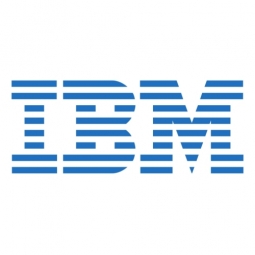Applicable Industries
- Equipment & Machinery
- National Security & Defense
Use Cases
- Personnel Tracking & Monitoring
- Tamper Detection
About The Customer
Christian Brothers Services is a nonprofit service provider to Catholic and faith-based institutions. The company administers nine independent trusts that manage cooperative programs in health, property/casualty, and retirement benefits for approximately 3,500 church-related organizations in the United States. The company is headquartered in Romeoville, Illinois, and employs nearly 200 people. The company's workforce is dispersed, with field employees frequently traveling within and outside the country, and many customer service agents working from home full time.
The Challenge
Christian Brothers Services, a nonprofit service provider to Catholic and faith-based institutions, faced a challenge with its increasingly dispersed workforce. The company needed to enhance employee access to collaboration and social networking tools. The company's field employees frequently traveled within and outside the country, and many of their customer service agents worked from home full time. The company had been relying on IBM collaboration solutions to keep its workforce connected. However, the existing system of electronic teamrooms was proving to be inefficient. If an employee was involved in multiple projects, a meeting affecting all those projects appeared on each project’s team room calendar instead of as a single entry on the person’s Notes calendar. This led to a lack of centralized information and increased difficulty in managing multiple projects.
The Solution
Christian Brothers Services decided to deploy IBM Connections software to address these challenges. The company focused on moving knowledge workers from online teamrooms to more functionally rich Connections communities. This allowed for better engagement of all employees with blogs, profiles, and improved access to critical corporate information. The IT staff members who participated in the pilot project for Connections software quickly saw the advantages. The development and operations groups were the first to replace their teamrooms with one IT Connections community. They started running projects through it, tracking activities and helping to keep each other accountable. Today, most project teams use Connections, and the company is concentrating on engaging all employees with corporate communities. One of the first companywide initiatives was the creation of a Connections community for security awareness.
Operational Impact
Quantitative Benefit

Case Study missing?
Start adding your own!
Register with your work email and create a new case study profile for your business.
Related Case Studies.

Case Study
Smart Water Filtration Systems
Before working with Ayla Networks, Ozner was already using cloud connectivity to identify and solve water-filtration system malfunctions as well as to monitor filter cartridges for replacements.But, in June 2015, Ozner executives talked with Ayla about how the company might further improve its water systems with IoT technology. They liked what they heard from Ayla, but the executives needed to be sure that Ayla’s Agile IoT Platform provided the security and reliability Ozner required.

Case Study
IoT enabled Fleet Management with MindSphere
In view of growing competition, Gämmerler had a strong need to remain competitive via process optimization, reliability and gentle handling of printed products, even at highest press speeds. In addition, a digitalization initiative also included developing a key differentiation via data-driven services offers.

Case Study
Predictive Maintenance for Industrial Chillers
For global leaders in the industrial chiller manufacturing, reliability of the entire production process is of the utmost importance. Chillers are refrigeration systems that produce ice water to provide cooling for a process or industrial application. One of those leaders sought a way to respond to asset performance issues, even before they occur. The intelligence to guarantee maximum reliability of cooling devices is embedded (pre-alarming). A pre-alarming phase means that the cooling device still works, but symptoms may appear, telling manufacturers that a failure is likely to occur in the near future. Chillers who are not internet connected at that moment, provide little insight in this pre-alarming phase.

Case Study
Premium Appliance Producer Innovates with Internet of Everything
Sub-Zero faced the largest product launch in the company’s history:It wanted to launch 60 new products as scheduled while simultaneously opening a new “greenfield” production facility, yet still adhering to stringent quality requirements and manage issues from new supply-chain partners. A the same time, it wanted to increase staff productivity time and collaboration while reducing travel and costs.

Case Study
Integration of PLC with IoT for Bosch Rexroth
The application arises from the need to monitor and anticipate the problems of one or more machines managed by a PLC. These problems, often resulting from the accumulation over time of small discrepancies, require, when they occur, ex post technical operations maintenance.

Case Study
Data Gathering Solution for Joy Global
Joy Global's existing business processes required customers to work through an unstable legacy system to collect mass volumes of data. With inadequate processes and tools, field level analytics were not sufficient to properly inform business decisions.







